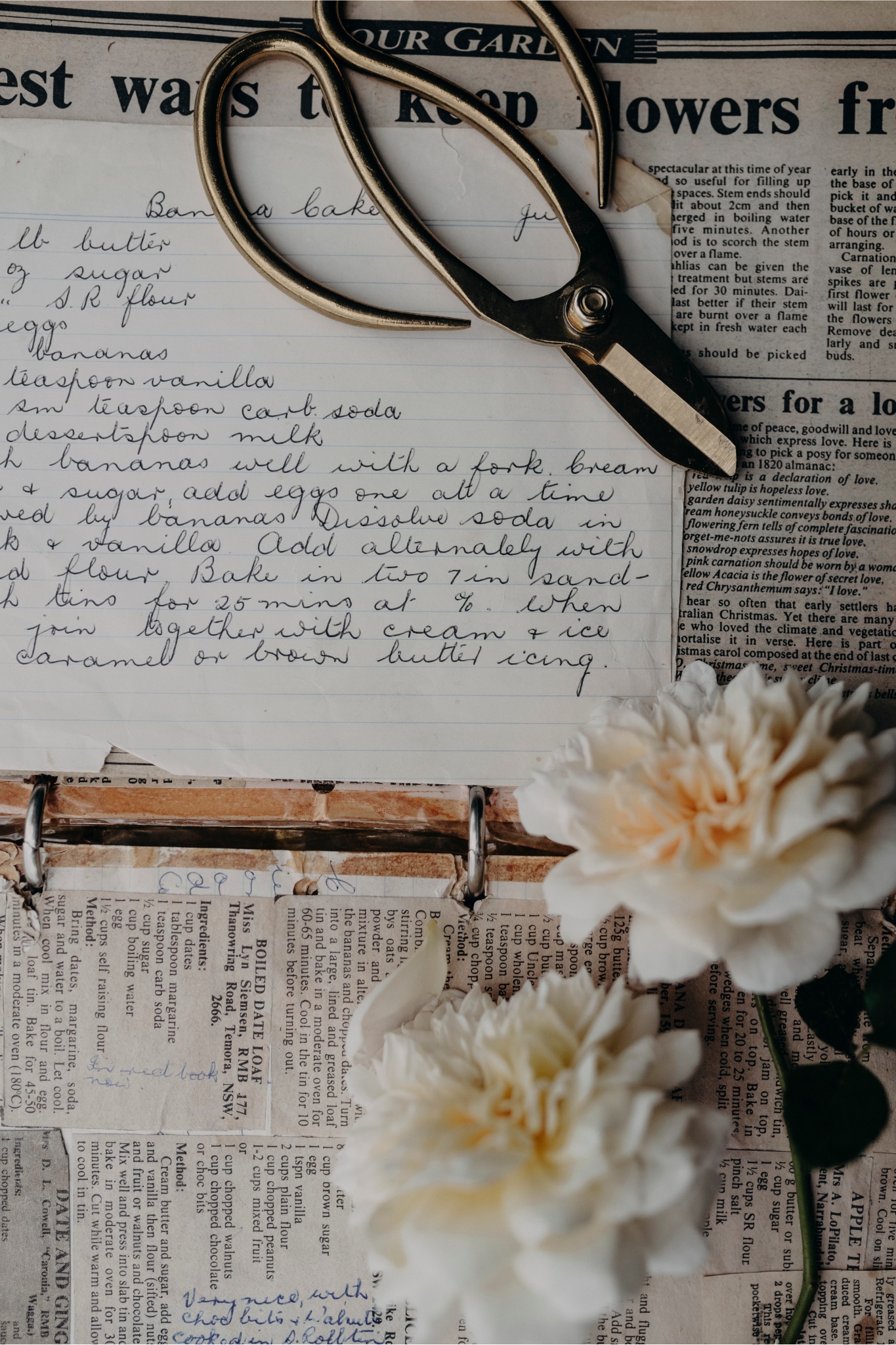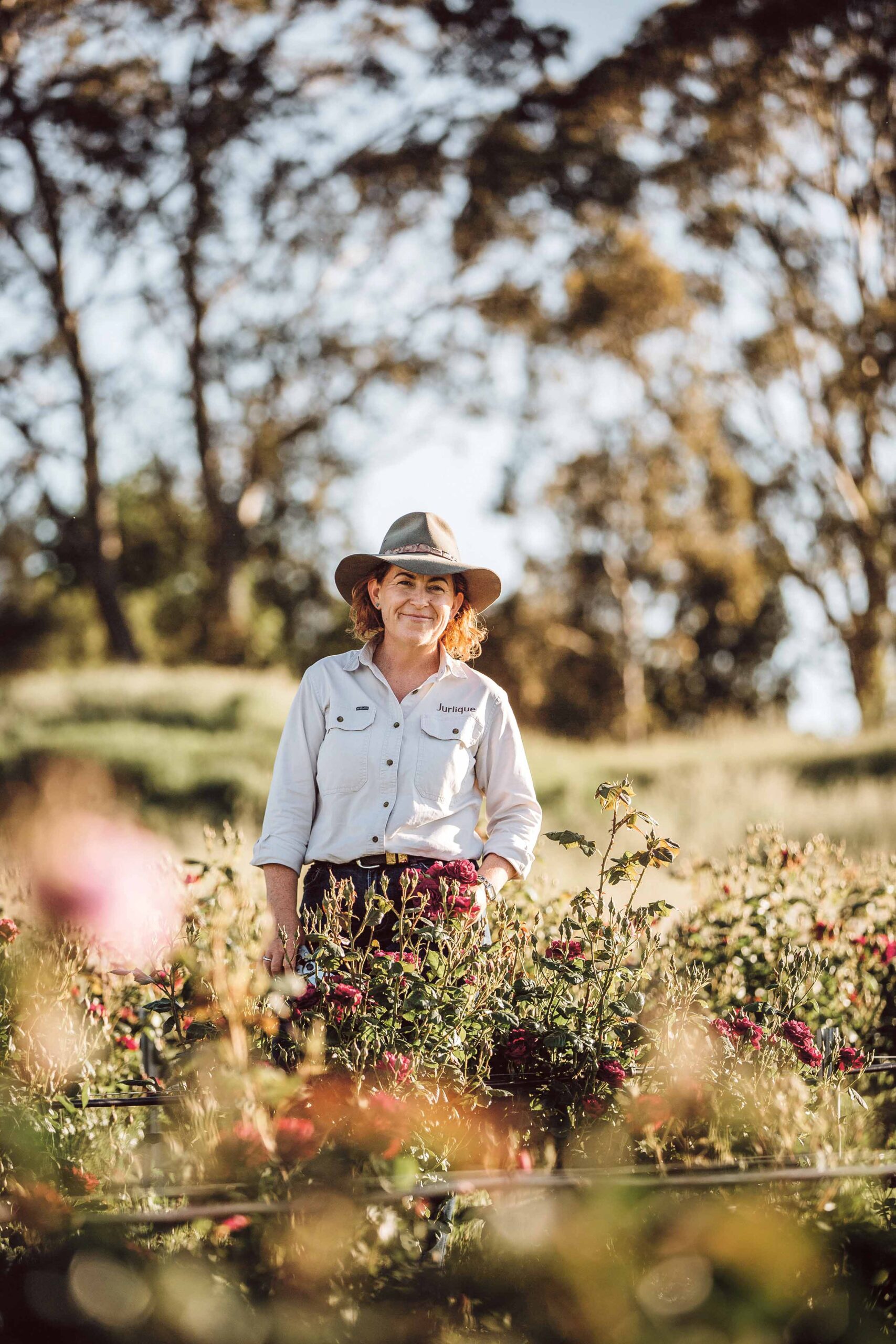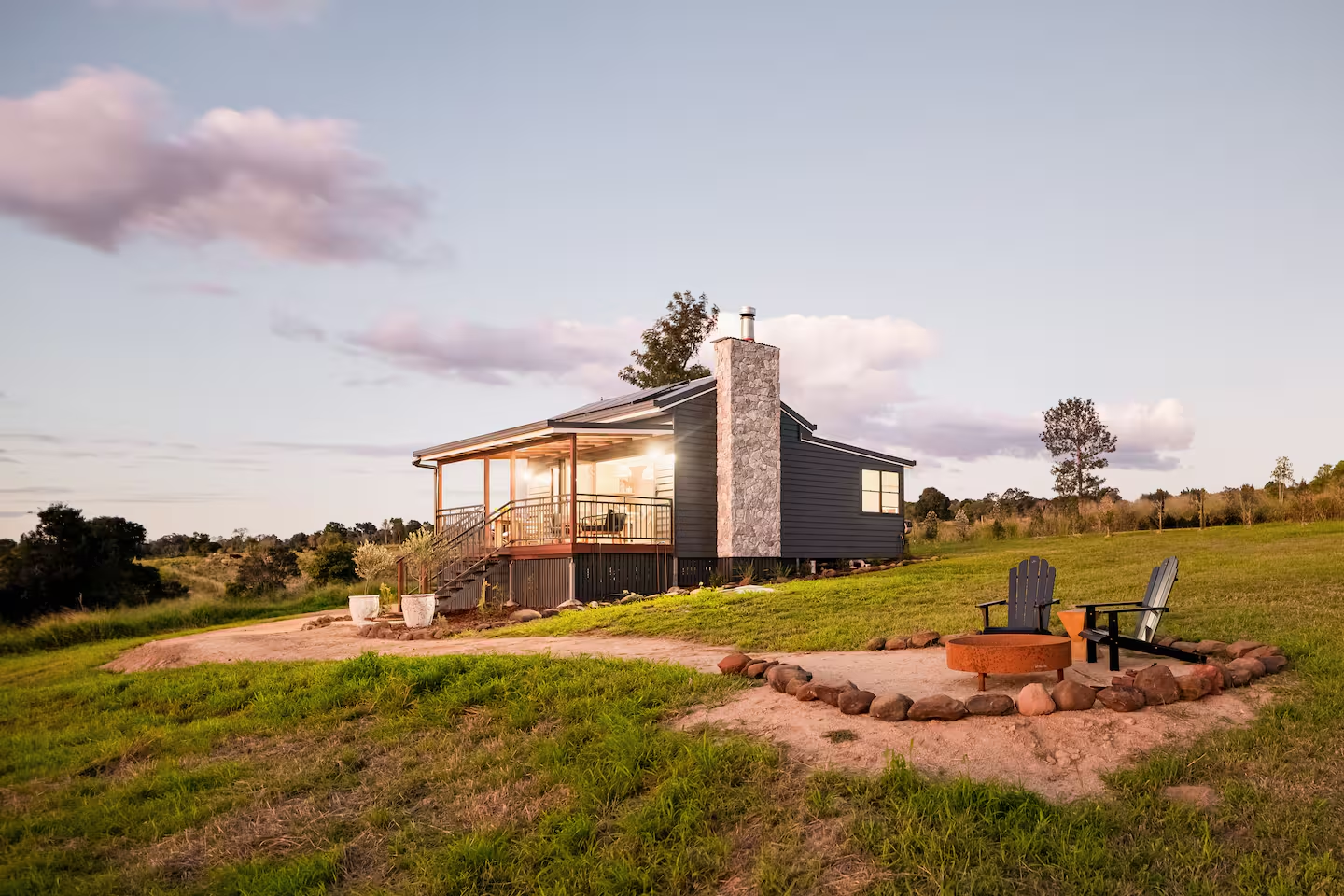Sign up to our mailing list for the best stories delivered to your inbox.
The Gin Gin Garden Club founder has fond memories of visiting her grandmother’s cottage on the family property.
WORDS CLAIRE AUSTIN PHOTOGRAPHY CLANCY PAINE


As they pack up their home of 35 years so my brother and sister-in-law can start a new chapter there, the carloads of boxes arriving at my place seem to be increasing. I roll my eyes when Mum turns to the back of the car to reveal “just a couple of boxes”… mostly unwanted, but as I go through them, I’ve found some amazing gems along with my school photos from Year 4.
One of the boxes included gardening and recipe books kept by my grandmother, Emmie. With her loopy, old-fashioned handwriting throughout, there are little tips such as reminders to cut back daisies and chrysanthemums in November, or an index of her treasured recipes.
I’m often asked where my green thumb comes from. When I think back to growing up at Hughenden, our family property near Gulargambone in Central Western New South Wales, only 100 kilometres from where I live now, I realise it must be from the many days spent following Emmie in her garden, watching her grow cuttings, pick roses and drag hoses around.
Emmie was a pioneer, someone who could make a lot from not much, and a huge advocate of ‘make do with what you’ve got’. She grew up during the Depression and, like so many others, was forced to be a single mother during World War II. She was renowned in the district for her cooking and her beautiful garden (and her card playing). She judged baking and flowers at local shows, not just in Gular, but she was a show judge for these sections at my local Warren show and in Coonamble as well.

WINTER TO DO LIST
1. Protect
Keep an eye on the weather and protect frost-tender plants. I use a spray product from AgroBest called Envy.
2. Plant
Plant bare root roses and trees. Winter is when they are in their dormant state and this is a cost-effective alternative to purchasing in spring.
3. Prepare
Prepare garden beds for spring planting. I mix decomposed sheep manure with soil and let it settle before planting.
4. Prune
Prune roses in July and August. I remove a good third of the plant and cut into a ‘U’ shape by removing growth in the centre of the plant.
5. Spray
Spray roses with lime sulphur after pruning, while plants are dormant. This helps protect from disease.
6. Divide
Take cuttings or divide plants to replant in the garden or in pots. Now’s perfect to divide and transplant strawberries.
7. Vegetables
Plant winter vegetables including carrots, beetroot, cauliflower, broccoli, Brussels sprouts and baby spinach. Succession planting ensures continuous supply.
8. Grow
Get a head start on spring vegetables: nurture tomato, bean, cucumber and zucchini seedlings in protected trays.
She battled with the elements — I hate to think how many times the dam that supplied the house dried up and she’d have to recreate her garden all over again. I think for this reason her garden was filled with hardy plants such as geraniums, daisies, plumbago, bougainvillea and oleander.
Like so many families on the land, my grandparents lived in a cottage on the family property; an easy bike-ride for little legs. My sister and I spent lots of time with Emmie: we’d ride our bikes to the cottage, stopping at our favourite trees along the way. We’d spend our day baking, watering the garden, tending to the cuttings in the greenhouse, watching baby chicks in the yard, and go home with full tummies just before dinner.
I often wonder what Emmie would think of the life and garden I’ve created at Gin Gin. Would she think I have it easy with my supply of bore water and automatic sprinklers? She’d marvel at Wobble-Tees and how the pressure pump allows you to run three in a row.
She’d also love that much of my garden has been grown from the generosity of others — the kikuyu runners, salvia cuttings, plumbago suckers and lamb’s ears.
Now my parents are swapping houses with my brother: when they go out to Gular, they’ll stay in Emmie’s cottage and the story will go on.
Claire Austin runs the Gin Gin Garden Club.
Subscribe to Graziher and never miss an issue of your favourite magazine! Already a subscriber? You can gift a subscription to someone special in your life.
To hear more extraordinary stories about women living in rural and regional Australia, listen to our podcast Life on the Land on Apple Podcasts, Spotify and all major podcast platforms.

Raised on a dairy farm near Hahndorf, SA, farm manager Cherie Hutchinson has a deep love for the land she works on.

If you like the idea of a private plunge pool, mountain views and a glass of local verdelho, it’s time to start planning your Firebreak Farm escape.